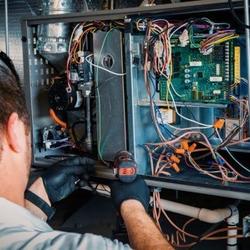California’s Furnace Mitigation Fee and Rule 1111: What You Need to Know
Thinking about replacing your gas furnace? If you live in California, you might want to read the rest of this blog to avoid getting slapped with a “furnace mitigation fee” .
You see, California recently enacted new rules that impose fines on manufacturers, distributors, sellers, and installers of residential/commercial furnaces if they create and install furnaces that emit too much nitrogen oxide into the atmosphere.
So how does this affect you, the homeowner? Well, unfortunately, some manufacturers, installers, etc are passing those fees on to the consumer in the form of higher installation costs.
Yes, that means you could absorb this cost.
In this blog, we’ll explain:
- What Rule 1111 entails
- Why Rule 1111 was enacted in the first place
- What you need to do to avoid being fined
Need to install a furnace and want to work with a contractor who offers energy-efficient furnaces that are compliant with Rule 1111?
Just contact True Home and we’ll help you pick a furnace that is right for your home and budget and compliant with the newest changes to Rule 1111.
What exactly is Rule 1111?
In a nutshell, the purpose of Rule 1111 is to limit the amount of nitrogen oxide emissions that natural gas furnaces release into the atmosphere.
To be more precise, Rule 1111 was imposed by SCAQMD (South Coast Air Quality Management District) in October of 2019 and is designed to push companies to create and install furnaces that emit 65% lower NOx (nitrogen oxide).
A similar rule, Rule 4905, is enacted in San Joaquin Valley.
If companies create and/or install a furnace (residential or commercial) that does not meet the rule’s emission standards, they are fined anywhere between $300 and $450, depending on the type of furnace and heat input capacity.
To be clear, the specific nitrogen oxide emission requirements are only required for residential and commercial gas-fired and fan-type central furnaces with a heat input capacity lower than 175,000 BTU per hour.
Why was Rule 1111 enacted in the first place?
SCAQMD enacted Rule 1111 in an attempt to protect the environment and California homeowners from dangerously-high nitrogen oxide emissions.
Nitrogen oxides are compounds that are natural byproducts of the gas furnace combustion process. And while they’re relatively harmless on their own, when they enter the atmosphere, they react with sunlight and other chemicals to create smog.
Smog has become a serious issue throughout Southern California and, when inhaled, irritates our airways and increases our risk of heart and lung diseases.
That said, by imposing fines for furnaces that emit high levels of nitrogen oxide emissions, SCAQMD is hoping to pave the way for cleaner, healthier air in California.
How to avoid being fined
If you’re in the market for a new furnace, beware that the contractor you hire and/or the furnace manufacturer you choose could be passing down their fines to you.
To ensure that you don’t get a higher installation price due to these fines, make sure you install a furnace that meets Rule 1111 NOx emission standards.
You can do this by asking the contractor for a furnace that meets the standards. They will be able to tell you which brand/models satisfy Rule 1111 emission standards.
Or you can do the homework yourself by researching different furnaces. All you need to do is look for a tag that indicates whether or not the system satisfies SCAQMD’s Rule 1111.
For example, the screenshot below is from a furnace listed on Bryant’s website and clearly indicates that the particular furnace would not satisfy Rule 1111 and therefore would be subject to a fine.
Looking for a contractor you can trust to install your new furnace?
Trust the furnace installation professionals at True Home. We offer a wide variety of high-efficiency furnaces that are compliant with Rule 1111/4905.
Our techs are honest and knowledgeable about Rule 1111/4905 and will give you straightforward advice on how to avoid fines and choose the heating system that’s best for you.
Plus, we even help you apply for a rebate of up to $500 when you choose to install select furnaces.

